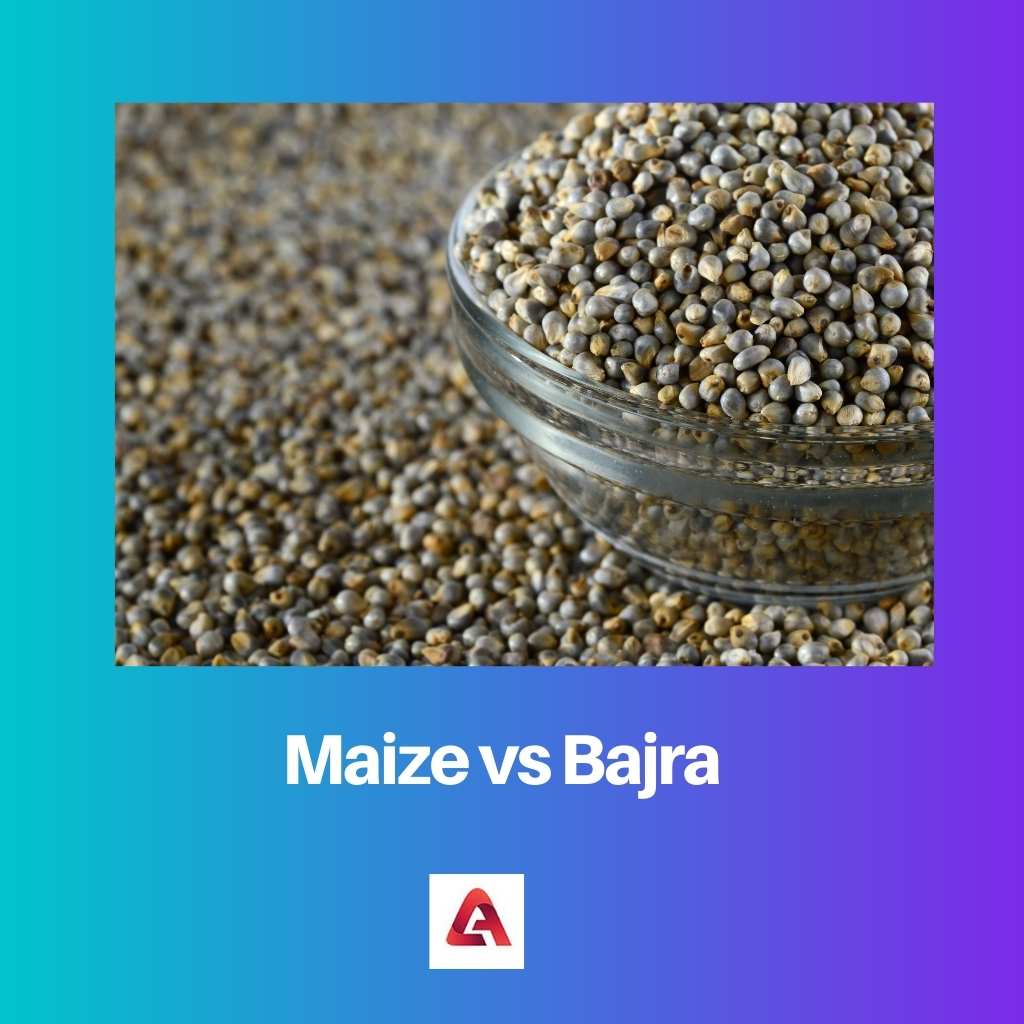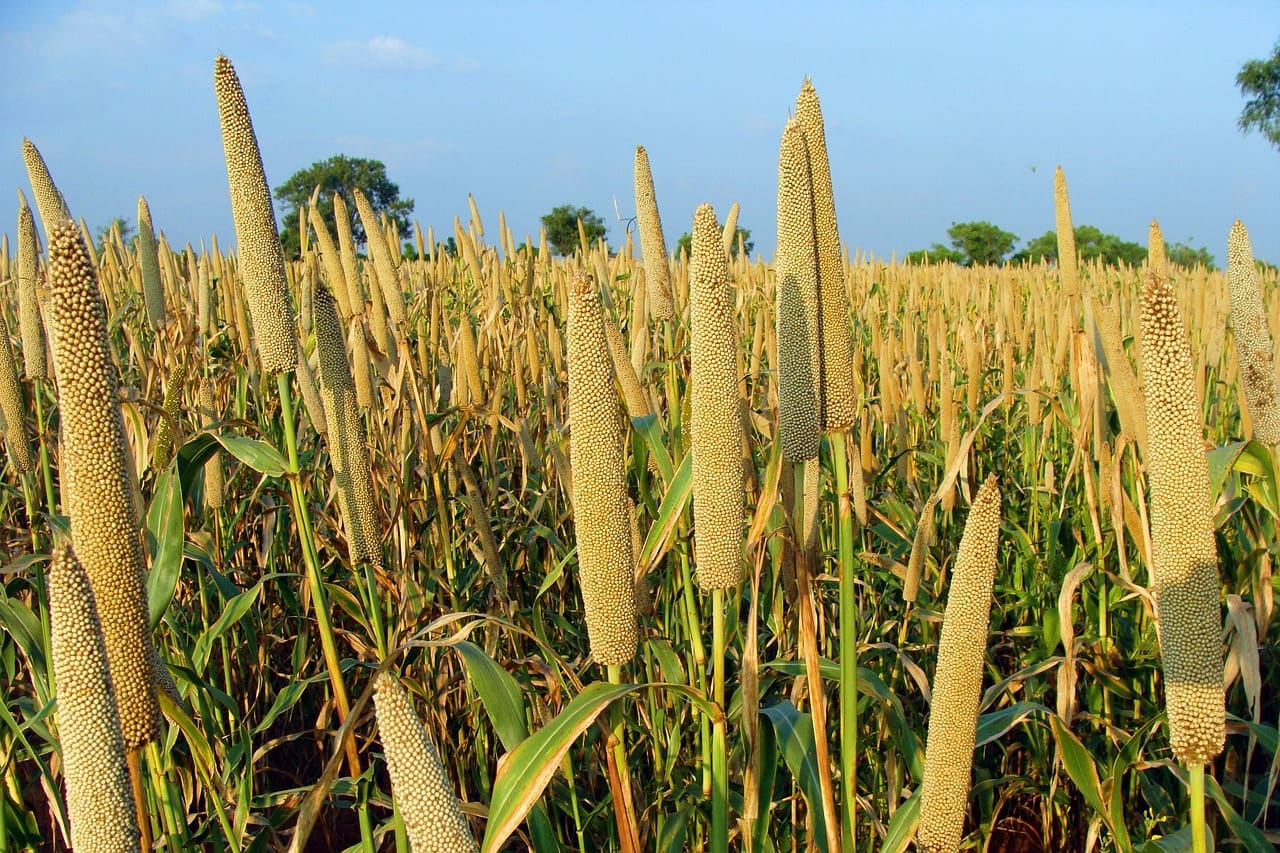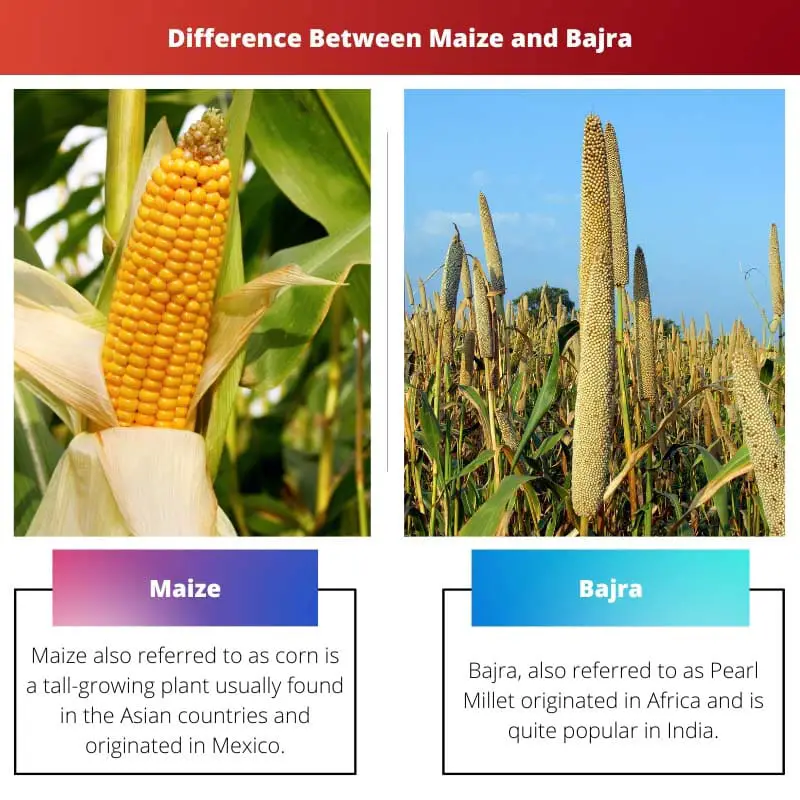Dieticians and Nutritionists always encourage alternatives to wheat and refined wheat flour to people trying to lose weight. The main alternatives suggested are Maize, Jowar, Bajra, but for an amateur, it can be quite confusing not knowing the exact information about each one of them.
They all are quite popular in the Indian Subcontinent but carry their set of differences.
Key Takeaways
- Maize is more versatile than Bajra, as it can be used to make various food items, while Bajra is primarily used to make flatbreads.
- Maize has a higher glycemic index than Bajra, which can cause a more rapid increase in blood sugar levels.
- Bajra is a good source of fiber, while maize is a good source of vitamins and minerals.
Maize vs Bajra
Maize or corn is a widely grown cereal grain that is used for food. It is a common food in many parts of the world. It is yellow in color and has a smooth texture. Bajra, is a grain that is commonly grown in India and Africa. It is a millet and is a grayish color with a rough texture.

Maize also referred to as corn is a tall-growing plant found in the Asian countries and originated in Mexico but is currently cultivated in almost all the countries worldwide. The annual cultivation of Maize exceeds Rice and Wheat too.
It has become a staple food and is not only used for human consumption but also to feed animals, also commercially it is used to prepare corn syrup, corn starch, corn flour, etc.
On the other hand, Bajra, also referred to as Pearl Millet originated in Africa and is quite popular in India as it is used to make flatbreads- Bajra Roti and is highly nutritious and is preferred by nutritionists too.
The kernels of Bajra are comparatively huge and appear oval. Bajra kernel can be of any color ranging from brown, white, yellow, purple depending on the condition in which they are cultivated.
Comparison Table
| Parameters of Comparison | Maize | Bajra |
|---|---|---|
| Type | Cereal Grain Crop | Millet |
| Grows in | Monsoon and Winter Season | Drought Conditions- mostly Summer with some Irrigation facilities |
| Soil Type (Preferred) | Clay Loam, Loamy Sand | Black Cotton Soil |
| Varieties | Sweet Corn, Popcorn, Pod Corn, Flint Corn, etc. | PUSA-444, PUSA-605, Saburi, ICTP 8203, etc. |
| Health Benefits | Treats Anemia, Maintains Blood Sugar Level, etc. | Aids in weight loss, improves heart condition, May aid in preventing cancer, etc. |
What is Maize?
As mentioned above, Maize is a type of cereal grain crop that grows in the monsoon period and needs a good amount of water and has enormous health benefits.
Maize originated in Mexico and then traveled to the United States and is currently one of the highest cultivated plants globally. It is included in animal fodder as well.
Maize got its name from the Spanish word ‘Maiz’ and is popularly referred to as Corn in the United States and has umpteen names in each country.
Every country uses a different type of Maize although the most preferred is the Sweet Corn- it naturally tastes sweet and is actively consumed in many countries.
For scientific research, the word Maize is used rather than corn, as Maize refers to the actual crop and Corn can vary in each country owing to its numerous types.
The usual height of the Maize plant is 10ft although some plants grow exponentially even up to 45ft. Maize plant falls under the category of Anemophilous plants- the plants that use the wind to pollinate.
Maize plants are included in the family of Poaceae which primarily included monocotyledonous grasses (Family of Wheat, Rice, Sugarcane, etc.).
Maize is of numerous types including Popcorn, Pod Corn, Sweet Corn, Flint Corn, Sweet Corn, Dent Corn, etc., and each country cultivates these types according to the demand.
Maize possesses an enormous number of benefits- provides the necessary amino acids, aids in improving the eye-sight, maintains blood sugar level, strengthens the bone by increasing the bone density through the calcium present in it, pregnant women are also advised to consume Maize/ Corn.
Commercially it is of great use as the products like Corn Starch, Corn Syrup, Corn Flour is preferred by many.

What is Bajra?
Aforementioned, Bajra/ Pearl Millet is a type of millet that originated in West Africa around 2500 to 2000 BC and is to date the most widely grown millet globally.
Currently, the major cultivation of Bajra is in the Indian Subcontinent, it is a kind of staple food in India and is used to make Indian Flatbreads- Roti.
The height of the Bajra plant ranges between 1-4m and the grain length is almost 3-4mm (Oval Grains). Bajra plant has the largest kernel in the millet family.
Bajra plant prefers drought conditions to grow with high temperature and high salinity, this is the primary reason that Bajra is mostly cultivated in the Indian Subcontinent as the temperature is high all-round the year in India.
Bajra is called the summer crop due to the same reason, it just needs a little amount of water that can be provided through irrigation. The production of Bajra is high as it is a highly tolerant plant and can grow in any condition.
Pearl Millet/ Bajra is currently one of the highest millets produced, annually it covers almost 50-60% of all millet production with India being the highest producer of all countries, with Africa being the second-highest- as Bajra is the primary staple food in Africa along with Sorghum.
Bajra can be included in various cuisines, in North India it is used to make Flatbreads whereas in South India it is used to make Bajra Curry, it is also used to make Fura Beverage in Africa, etc.
The health benefits of Bajra are tremendous including- increasing metabolism, weight loss, curing digestion disorders, etc.
Nowadays, researchers and scientists are focusing on cultivating hybrid varieties that are genetically modified to ensure resistance to pests, better yield, higher nutritional value, etc.

Main Differences Between Maize and Bajra
- Maize is a cereal grain crop that originated in Southern Mexico, whereas Bajra is a millet crop that originated in West Africa.
- The height of the Maize plant is 3m while the height of a Bajra plant ranges from 1-4m.
- Maize grows in monsoon or well-watered conditions, on the other hand, Bajra grows in mostly drought conditions.
- Maize plant prefers clay loam, sandy loam soil while Bajra plant prefers black cotton soil to grow.
- Maize provides health benefits like providing amino acids, improving eye-sight, treating anemia, increasing bone density, ensuring a healthy pregnancy, etc., whereas Bajra guarantees benefits like aiding in weight loss, curing digestive problems, etc.

References
- https://www.taylorfrancis.com/books/mono/10.1201/9780429042171/maize-third-world-christopher-dowswell-paliwal-ronald-cantrell
- https://www.sciencedirect.com/science/article/pii/S0065211308609360
